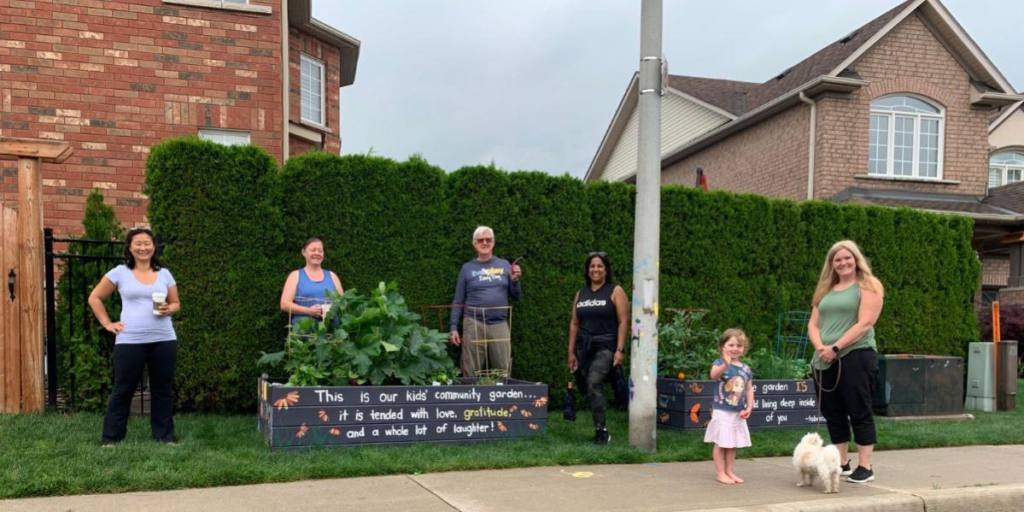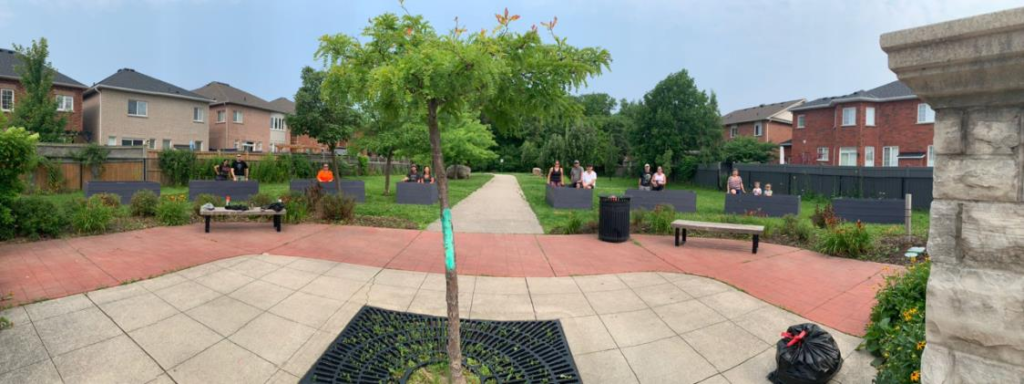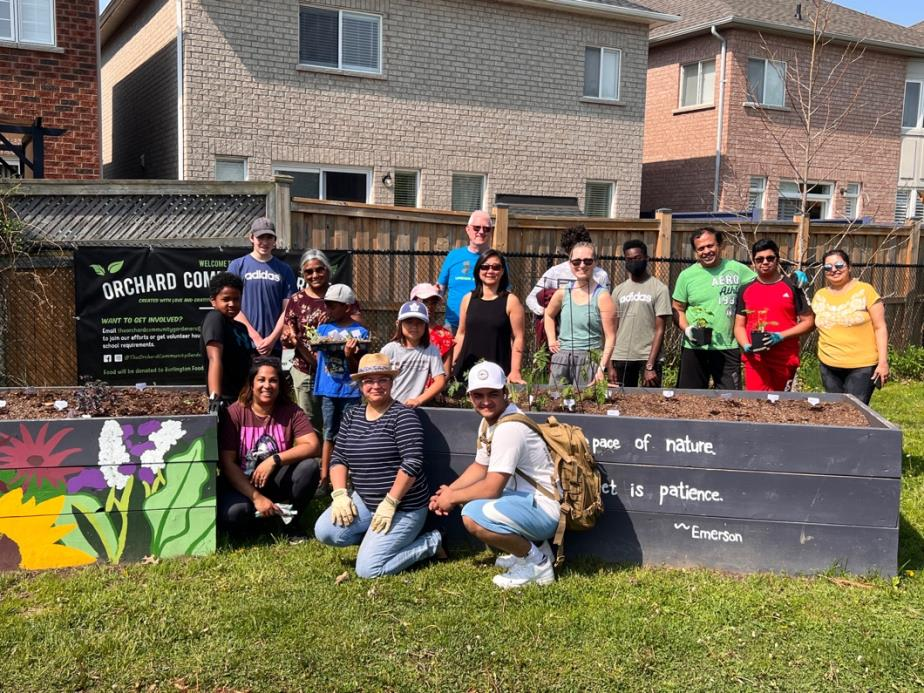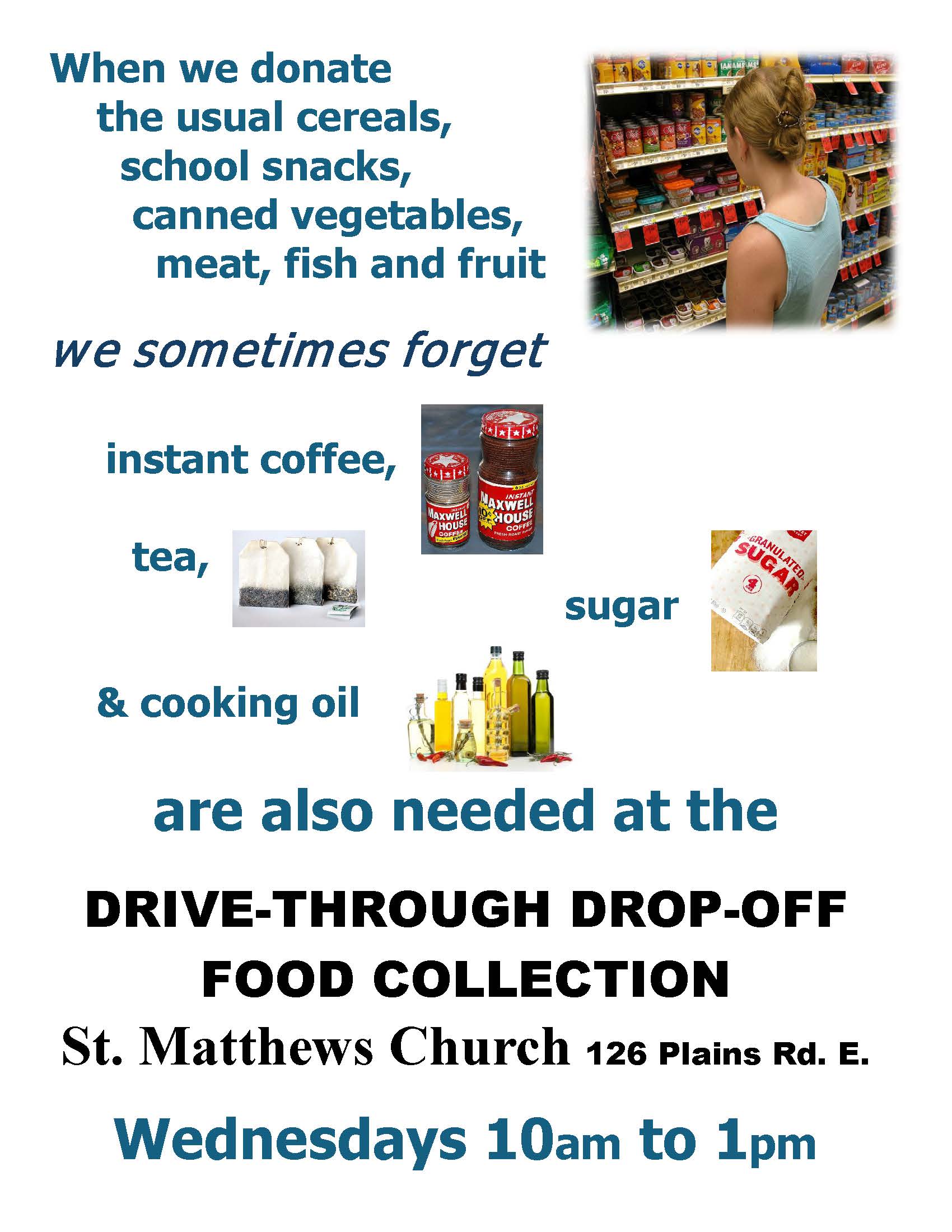By Jennifer Spence, City of Burlington; Lisa Crapsi, City of Burlington; and Astrid Arumae, Tamarack Institute
This report was prepared by the Tamarack Institute in conjunction with the City of Burlington, discussing how the city supports grass-roots efforts led by residents, its Neighbourhood Connectors Program, and other great work. Whether you’re organizing something within your neighbourhood and want to hear how the city can support your goals, or just want to read about some amazing local resources, read on.
Asset-based community development: when city and community meet in the middle
Have you planned community activities that just do not seem to work at the neighbourhood level? Thousands of dollars and hundreds of hours of time can be invested in supplying programs or activities that are done TO and FOR the community without their involvement. The City of Burlington ON, faced a similar realization and decided to do something about it.
Using Asset Based Community Development (ABCD), the city set themselves an ambitious goal of shifting the way they show up in the community by putting people at the centre of their work. This means supporting and empowering the community to come together to lead, decide and build strong local activities.
Overview
Traditionally, most municipalities work in a top-down fashion when they build programs and activities with little engagement or involvement from the people who live in the community. This has caused cities to become more of a service model that has people believing that the city will do everything for them (service centered mentality).
When cities lead activities and programs, they are seen as the experts who have the knowledge, tools and resources to address community issues. They tend to focus on what is wrong in the community and create programs that address the needs or problems. That is why a balance between the experts and the experts is vital. Context experts are the people in our community who live, work, and play in the city. They are the people who experientially know about issues in their community and often have the solutions. In community engagement work it is important to engage context experts at the beginning of community activities.
The City of Burlington has spent the last two years building trusting relationships with the people who live in their communities, providing leadership training for community champions and helping to discover the assets within the community. This case story is about how the City of Burlington has shifted to building programs and projects WITH and BY the community rather than TO and FOR the community.

Creating a top-down and bottom-up approach
Amid the COVID-19 pandemic, the City of Burlington witnessed the community reaching out to one another for support and connection. With the growing sense of disconnection and social isolation, the city realized that the existing top-down approaches for supporting and engaging with the community were not working. This sparked a new way of working WITH and BY the community. By signing up for Tamarack Institute’s Deepening Community membership and with the support and guidance from the Deepening Community team, the city staff built a case to test out a new way for community development work with a focus on using an Asset Based Community Development approach instead of deficit-based approach.
Presentations for local council and internal buy-in was secured and the initial plan for recruiting Block Connectors was laid out. The city liaison team reached out to initial six potential “Neighbourhood Connectors” they already knew and shared with them the plan to grow the network of connectors. Soon the first block party was organized, and within three months they had gone from six to 24 connectors.
● Despite stretched resources and the ongoing health crisis, they leveraged the help of the local Fire Department and Park Ambassadors to start engaging with the residents through community conversations and just being visible and present in the community. These conversations covered topics such as identifying what people love and care about, what they had to offer and share, what they were missing or worrying about and how the city could support them.
● Staff held Ice Cream Fridays and lunch conversations with residents.
Soon, it was clear that there was an abundance of untapped potential in the form of skills, knowledge, and love for their neighbourhood in Burlington and the number of connectors had grown close to a 100. How to connect the neighbours, their gifts, and assets to benefit everyone and grow the initiative, was the next step in their journey.
Putting people at the centre of city activities
● To help build the knowledge and skills on how to grow and nurture connections and neighbourhood relationships using ABCD, the city decided to create a community leadership program. The Neighbourhood Connector Leadership Training program was launched, and residents could apply to take part. In addition to this, the city put in place two types of low-barrier community grants that grassroot groups and residents alike could access.
● The Community Development Fund offers a one-time multi-year (up to three years) funding opportunity to support community organizations in building capacity to provide programs, services, and events for residents of Burlington.
● The Neighbourhood Community Matching Fund offers one-time grants of up to $10,000 for resident-led projects. In 2021, the Love My Neighbourhood program was launched offering a $500 seed-fund to any resident, neighbour, street section or multi-unit building to organize a neighbourhood gathering or activity.
All the above programming is supported by city liaison officers to help any eager resident connect with the right resource.
Love your neighbour, love your neighbourhood
What started as the city leading residents to connect with one another has now become a local movement of resident-led (bottom-up) and city-supported (top-down) program.
Below are some of the examples of how Burlington’s residents have taken a lead and how the city supported their local love.

Orchard Community Garden
This garden was started by a local resident with two planter boxes built by her husband and other neighbourhood dads. The planters were placed in their side yard to invite their own children along with other neighbourhood families to enjoy. Soon, this grew to 11 neighbours forming the Orchard Community Gardeners, each of them sharing their gifts and assets, from social media and environmental skills to farming and grant writing expertise. The group met with the city liaison and the local councillor and applied for the city’s Community Matching Fund to add more community garden boxes to the public parkette that was experiencing some safety concerns.
Turning the parkette into a bigger community garden space where there would be a lot of activity and neighbour presence would help make it safer. The construction of the Orchard Community Garden was a true community effort. Neighbours and local partners pitched in by donating equipment, materials, and time to engineer, build, fill and decorate the eight large garden boxes situated at the entrance to the parkette. Children helped to plant, paint and decorate the boxes and now do so every year as a fun community project. An annual music festival has been taking place there and a community pizza and pasta event was organized, drawing in over 200 people from the neighbourhood. The Orchard Community Garden has shown what is possible when the community comes together to share their gifts and pour their hearts into what they care about.
The ACT Club
This club is a citizen-led initiative of two people from the community wanting to advocate for more community-informed urban development and planning. The city supported them with designing a postcard-style survey that the group took the lead to distribute locally. The club led the engagement process and have organized community activities such as a
six-community Halloween party and the building of birdhouses with 20–25 people who regularly attend.
The Orchard Hub
This is a perfect example of how the city has shifted to support a neighbourhood to do WITH and BY themselves as they plan a new gathering space, a community centre that residents, local groups, and local organizations can use. The city organized the purchase of a classroom located in a local school and the neighbourhood is leading the planning of the Hub from the choosing the colours of the walls to the furniture to be purchased. The city is also supporting the residents to plan how it will be used, the process and procedures and other logistics. It is the hope of the city that the residents will own the programs and activities and the city will continue to support them.
Conclusion: a new way of working with neighbourhoods
The City of Burlington has created a deeper, more involved, and empowered community engagement process where citizens step up and take the lead in planning neighbourhood activities and taking pride in their neighbourhood. City staff are challenging their old ways of community work and testing a new way of working with neighbourhoods that is shifting the power to residents to be leaders.
Building relationships and trust with neighbourhood champions, learning about the gifts and assets of the people who live in neighbourhoods and bringing them together to create activities such as the community gardens. It’s about getting out of the way of what the community can do for themselves and supporting them in what they identify that they want the city to do for them.
Tamarack’s Deepening Community practice vision is: that all neighbourhoods in Canada be built using the gifts and assets of the community and its residents who contribute to the planning and development of cities and towns that ultimately build a sense of belonging for everyone. Using an Asset Based Community Development (ABCD) lens alongside Collective Impact, we support institutions, organizations, neighbourhoods, towns, and cities to build their knowledge and skills to develop local strategies and enable community-wide change.





